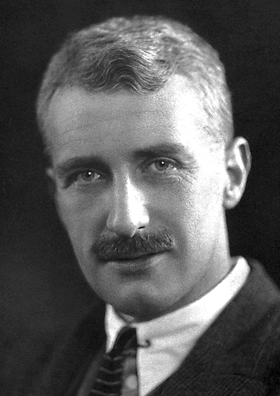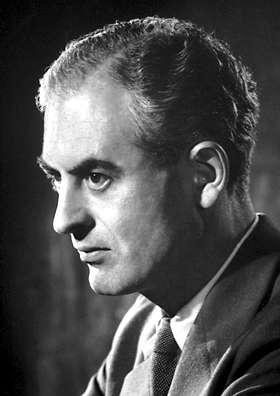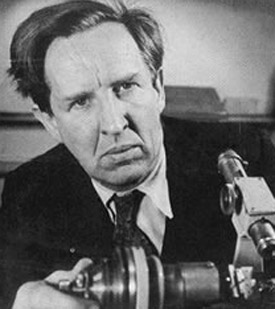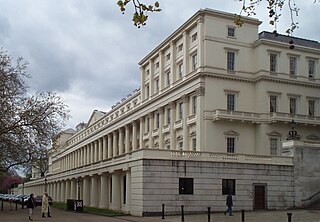Related Research Articles

Max Ferdinand Perutz was an Austrian-born British molecular biologist, who shared the 1962 Nobel Prize for Chemistry with John Kendrew, for their studies of the structures of haemoglobin and myoglobin. He went on to win the Royal Medal of the Royal Society in 1971 and the Copley Medal in 1979. At Cambridge he founded and chaired (1962–79) The Medical Research Council (MRC) Laboratory of Molecular Biology (LMB), fourteen of whose scientists have won Nobel Prizes. Perutz's contributions to molecular biology in Cambridge are documented in The History of the University of Cambridge: Volume 4 , published by the Cambridge University Press in 1992.

Archibald Vivian Hill, known as A. V. Hill, was a British physiologist, one of the founders of the diverse disciplines of biophysics and operations research. He shared the 1922 Nobel Prize in Physiology or Medicine for his elucidation of the production of heat and mechanical work in muscles.

Rosalind Elsie Franklin was a British chemist and X-ray crystallographer whose work was central to the understanding of the molecular structures of DNA, RNA, viruses, coal, and graphite. Although her works on coal and viruses were appreciated in her lifetime, Franklin’s contributions to the discovery of the structure of DNA were largely unrecognized during her life, for which she has been variously referred to as the "wronged heroine", the "dark lady of DNA", the "forgotten heroine", a "feminist icon", and the "Sylvia Plath of molecular biology".

Dorothy Mary Crowfoot Hodgkin was a Nobel Prize-winning British chemist who advanced the technique of X-ray crystallography to determine the structure of biomolecules, which became essential for structural biology.

Sir Peter Brian Medawar was a Brazilian-British biologist and writer, whose works on graft rejection and the discovery of acquired immune tolerance have been fundamental to the medical practice of tissue and organ transplants. For his scientific works, he is regarded as the "father of transplantation". He is remembered for his wit both in person and in popular writings. Richard Dawkins referred to him as "the wittiest of all scientific writers"; Stephen Jay Gould as "the cleverest man I have ever known".

Maurice Hugh Frederick Wilkins was a New Zealand-born British biophysicist and Nobel laureate whose research spanned multiple areas of physics and biophysics, contributing to the scientific understanding of phosphorescence, isotope separation, optical microscopy and X-ray diffraction, and to the development of radar. He is known for his work at King's College London on the structure of DNA.

The Royal Institution of Great Britain is an organisation for scientific education and research, based in the City of Westminster. It was founded in 1799 by the leading British scientists of the age, including Henry Cavendish and its first president, George Finch. Its foundational principles were diffusing the knowledge of, and facilitating the general introduction of useful mechanical inventions and improvements, as well as enhancing the application of science to the common purposes of life.

John Desmond Bernal was an Irish scientist who pioneered the use of X-ray crystallography in molecular biology. He published extensively on the history of science. In addition, Bernal wrote popular books on science and society. He was a communist activist and a member of the Communist Party of Great Britain (CPGB).

John Zachary Young FRS, generally known as "JZ" or "JZY", was an English zoologist and neurophysiologist, described as "one of the most influential biologists of the 20th century".
Philip Ball is a British science writer. For over twenty years he has been an editor of the journal Nature, for which he continues to write regularly. He is a regular contributor to Prospect magazine and a columnist for Chemistry World, Nature Materials, and BBC Future.
Filming periodically takes place at University College London. The university tends to be chosen as a location for film and television recording because of its convenient position within London and the historical character of the UCL Main Building and Front Quad. Film and TV appearances include:
Medawar may refer to:

The Royal Society presents numerous awards, lectures and medals to recognise scientific achievement. The oldest is the Croonian Lecture, created in 1701 at the request of the widow of William Croone, one of the founding members of the Royal Society. The Croonian Lecture is still awarded on an annual basis, and is considered the most important Royal Society prize for the biological sciences. Although the Croonian Lecture was created in 1701, it was first awarded in 1738, seven years after the Copley Medal which is the oldest Royal Society medal still in use and is awarded for "outstanding achievements in research in any branch of science"
The Bernal Lecture was an annual lecture on the social function of science organised by the Royal Society of London and endowed by Professor John Desmond Bernal. It was last delivered in 2004, after which it was merged with the Wilkins Lecture and Medawar Lecture to form the Wilkins-Bernal-Medawar Lecture.
The Medawar Lecture was an annual lecture on the philosophy of science organised by the Royal Society of London in memory of Sir Peter Medawar. It was last delivered in 2004 after which it was merged with the Wilkins Lecture and the Bernal Lecture to form the Wilkins-Bernal-Medawar Lecture.
The Wilkins-Bernal-Medawar Lecture is a public lecture organised annually by the Royal Society of London.
Sir Peter John Morris, AC, FRS, FMedSci, FRCP, FRCS was an Australian surgeon and Nuffield professor of surgery at the University of Oxford. Morris was President of the Royal College of Surgeons of England, founder of the Oxford Transplant Centre and director of the Centre for Evidence in Transplantation at the Royal College of Surgeons of England.

Hasok Chang is a Korean-born American historian and philosopher of science currently serving as the Hans Rausing Professor at the Department of History and Philosophy of Science at the University of Cambridge and a board member of the Philosophy of Science Association. He previously served as president of the British Society for the History of Science from 2012 to 2014.

June Barrow-Green is a professor of History of Mathematics at the Open University and a visiting professor at the London School of Economics.
Michela Massimi is an Italian and British philosopher of science, a professor of philosophy at the University of Edinburgh, and the president-elect of the Philosophy of Science Association. Her research has involved scientific perspectivism and perspectival realism, the Pauli exclusion principle, and the work of Immanuel Kant.
References
- ↑ "The 2010 Wilkins-Bernal-Medawar Lecture". The Royal Society. Retrieved 14 August 2010.
- "The Wilkins Lecture (1947)" . Retrieved 20 March 2009.